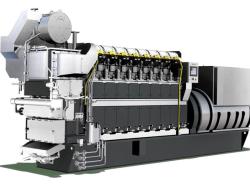
OR WAIT null SECS
© 2024 MJH Life Sciences™ and Turbomachinery Magazine. All rights reserved.
Why multiple team players need to be in sync during commissioning, startup
Involvement of multiple team players during the startup and commissioning of turbomachinery equipment could lead to costly communication errors. The case study below shows how lube oil pressure in a motor-gear-compressor installation became a problem because of such lack of communication.
During commissioning and startup of the equipment, the pressure control valve had to be opened to its maximum to barely achieve the minimum oil header pressure at the compressor deck. There was some type of short circuiting of the oil supply to the bearings. An internal OEM communication gap proved to be the root cause of the short circuiting of the oil supply to the bearings.
This article contains excerpts from a case study presented by Kevin D. Yates of The Dow Chemical Company at the 42ndTurbomachinery Symposium in Houston, Texas.
Among the requirements identified later was the need to verify that the test stand lube oil pressure is in agreement with the train design during document reviews. There is also a need to shop verify test stand conditions vs. job order as another check and balance.
Motor witness test run happened at motor OEM prior to commissioning. Gearbox witness test run was at gearbox OEM. Compressor witness test run happened at compressor OEM, and lube oil console (LOC) witness test run was at LOC OEM. All test runs were successful. Field installation was supervised by owner and general contractor. Lube oil console was inspected for cleanliness and debris.
Piping was installed after inspections. All deficiencies observed were corrected and there were no known issues prior to commissioning.
Oil pressure design target on compressor deck was 1.2 bar / 17.5 psig. Upstream pressure control valve adjusted to its maximum travel to achieve only ~16.5-17 psig on the deck. Excessive oil return flow observed in return sight glasses.
Thorough field inspection vs. the P&ID’s was conducted. The LOC valve sizes were compared to design. And the LOC witness test run reports were reviewed. No obvious issues were found.
Rundown tank check valve was inspected and verified and the lube oil pumps were inspected with rotation checks and pressure confirmation. No issues found in this too.
Ultrasonic oil flow tests were conducted on lube oil piping. Individual flows were measured at all available supply and return lines. Data results suggested excessive flow to the compressor thrust bearing. Oil flow to the thrust bearing was 2-3 x design.
The oil flow data was reviewed with compressor OEM. Thrust bearing oil flow was 2-3 x design flow. But other supply flows were within expected ranges.
Oil flow requirements and P&ID’s vs. test stand report were reviewed. It was found that compressor test run at the OEM factory was based on an oil supply pressure of 0.4 bar / 6.09 psig whereas the actual lube oil system design based on 17.5 psig bearing supply pressure.
Compressor OEM recommended an external orifice plate be added upstream of the thrust bearing. Dow agreed with the recommended solution and installed the orifice plate. Lube oil system restarted and pressures were found to be within the expected design parameters. The pressure control valve range was back within expected target. Compressor was successfully commissioned and started up. No oil leaks were observed and vibration and bearing temperatures were acceptable


